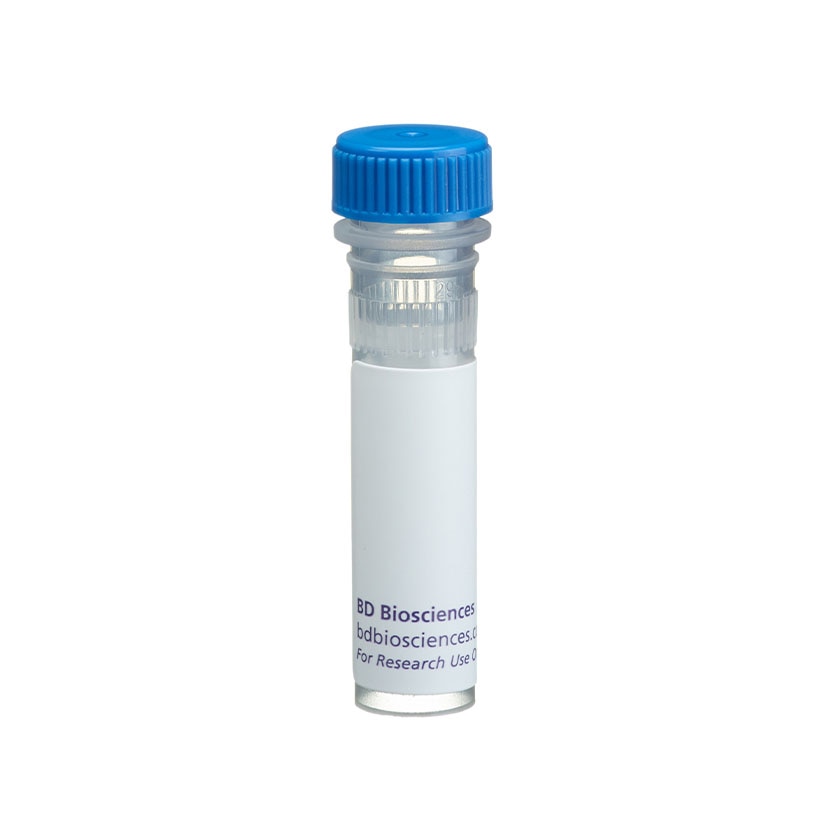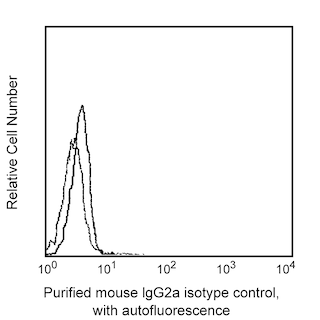Old Browser
This page has been recently translated and is available in French now.
Looks like you're visiting us from {countryName}.
Would you like to stay on the current country site or be switched to your country?




Flow cytometric analysis of HLA-DR, DP, DQ expression on human peripheral blood lymphocytes. Human whole blood was stained with either Purified Mouse Anti-Human HLA-DR, DP, DQ (Cat. No. 555557; solid line histogram) or Purified Mouse IgG2a, κ Isotype Control (Cat. No. 555571; dashed line histogram), then FITC Goat Anti-Mouse IgG/IgM (Cat. No. 555988). Erythrocytes were lysed with BD Pharm Lyse™ Lysing Buffer (Cat. No. 555899). Fluorescent histograms were derived from gated events with the side and forward light-scattering characteristics of viable lymphocytes. Flow cytometry was performed on a BD FACScan™ system.


BD Pharmingen™ Purified Mouse Anti-Human HLA-DR, DP, DQ

Regulatory Status Legend
Any use of products other than the permitted use without the express written authorization of Becton, Dickinson and Company is strictly prohibited.
Preparation And Storage
Product Notices
- Since applications vary, each investigator should titrate the reagent to obtain optimal results.
- An isotype control should be used at the same concentration as the antibody of interest.
- Caution: Sodium azide yields highly toxic hydrazoic acid under acidic conditions. Dilute azide compounds in running water before discarding to avoid accumulation of potentially explosive deposits in plumbing.
- Sodium azide is a reversible inhibitor of oxidative metabolism; therefore, antibody preparations containing this preservative agent must not be used in cell cultures nor injected into animals. Sodium azide may be removed by washing stained cells or plate-bound antibody or dialyzing soluble antibody in sodium azide-free buffer. Since endotoxin may also affect the results of functional studies, we recommend the NA/LE (No Azide/Low Endotoxin) antibody format, if available, for in vitro and in vivo use.
- Species cross-reactivity detected in product development may not have been confirmed on every format and/or application.
- Please refer to www.bdbiosciences.com/us/s/resources for technical protocols.
Companion Products
.png?imwidth=320)

The TU39 monoclonal antibody specifically recognizes human major histocompatibility (MHC) Class II HLA-DR, DP and most DQ antigens. These antigens are encoded by genes within the Human Leukocyte Antigen (HLA) Complex located on chromosome 6. MHC Class II antigens are transmembrane heterodimeric glycoproteins composed of α chain (36 kDa) and β chain (27 kDa) subunits. They are expressed primarily on antigen presenting cells which include dendritic cells, monocytes, macrophages, thymic epithelial cells, and B cells. They are also expressed on activated T cells. This molecule plays a major role in mediating cellular interactions during antigen presentation to CD4+ T lineage cells. The TU39 antibody is reportedly useful for immunophenotyping as well as functional studies including the inhibition of mixed lymphocyte reactions and antibody-mediated complement fixation on target cells.
Development References (2)
-
Pawelec G, Ziegler A, Wernet P. Dissection of human allostimulatory determinants with cloned T cells: stimulation inhibition by monoclonal antibodies TU22, 34, 35, 36, 37, 39, 43, and 58 against distinct human MHC class II molecules. Hum Immunol. 1985; 12(3):165-176. (Biology). View Reference
-
Ziegler A, Heinig J, Muller C, et al. Analysis by sequential immunoprecipitations of the specificities of the monoclonal antibodies TU22,34,35,36,37,39,43,58 and YD1/63.HLK directed against human HLA class II antigens. Immunobiology. 1986; 171(1-2):77-92. (Biology). View Reference
Please refer to Support Documents for Quality Certificates
Global - Refer to manufacturer's instructions for use and related User Manuals and Technical data sheets before using this products as described
Comparisons, where applicable, are made against older BD Technology, manual methods or are general performance claims. Comparisons are not made against non-BD technologies, unless otherwise noted.
For Research Use Only. Not for use in diagnostic or therapeutic procedures.
Report a Site Issue
This form is intended to help us improve our website experience. For other support, please visit our Contact Us page.